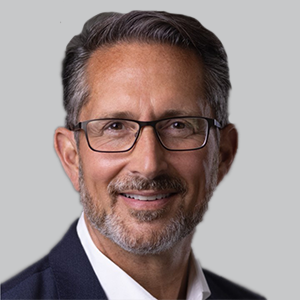Article
Headaches Associated With Sex Are No Joke
Author(s):
Despite comedians’ assertions to the contrary, sex-associated headaches are not funny. But medications can help relieve or even prevent them.
José Biller, MD, FACP, FAAN, FANA, FAHA

Comedians have long joked about spouses avoiding sex by claiming to have a headache, but headaches associated with sex are no laughing matter, according to a headache specialist.
“Many people who experience headaches during sexual activity are too embarrassed to tell their physicians, and doctors often don’t ask,” said José Biller, MD, FACP, FAAN, FANA, FAHA, Chair of the Department of Neurology with the Loyola University Chicago Stritch School of Medicine and certified in Headache Medicine by the United Council for Neurologic Subspecialties. Sexual activity is comparable to mild- to moderate-intensity exercise, he noted.
“Headaches associated with sexual activity can be extremely painful and scary,” Biller said. “They also can be very frustrating, both to the individual suffering the headache and to the partner.”
About 1% of adults report that they have experienced headaches associated with sexual activity and that such headaches can be severe. But the actual incidence is certainly higher, Biller noted.
Headaches usually are caused by disorders such as migraines or tension, and the vast majority of headaches associated with sexual activity are benign. But headaches also can be secondary to other life-threatening conditions. In a small percentage of cases, these headaches can result from a serious underlying condition, such as a hemorrhage, brain aneurysm, stroke, cervical artery dissection, or subdural hematoma. “We recommend that patients undergo a thorough neurological evaluation to rule out secondary causes, which can be life-threatening,” Biller said. “This is especially important when the headache is a first occurrence."
WATCH NOW: Eliminating Migraine Stigmas Through Education: Valentina Popova, MD
In 2004, the International Headache Society classified headaches associated with sexual activity as a distinct form of primary headache, and the 2018 International Classification of Headache Disorders, Third Edition notes that it can be diagnosed with least 2 episodes of pain in the head and/or neck which are brought on by and occurring only during sexual activity, and either, or both, increase in intensity with increasing sexual excitement and are abruptly explosive in intensity just before or with orgasm. The ICHD-3 also notes that these headaches can last from 1 minute to 24 hours with severe intensity and/or up to 72 hours with mild intensity, and often cannot be better accounted for by another ICHD-3 diagnosis.1
The following are the 3 main types of sex-related headaches:
- A dull ache in the head and neck that begins before orgasm and gets worse as sexual arousal increases. It is similar to a tension headache.
- An intensely painful headache that begins during orgasm and can last for hours. This so-called thunderclap headache grabs attention because it comes on like a clap of thunder. Biller said patients describe this headache as “all of a sudden, there was a terrific pain in the back of my head. It was like someone hit me with a hammer.”
- A headache that occurs after sex and can range from mild to extremely painful. This headache gets worse when the patient stands and lessens when the patient lies back down. The cause is an internal leak of spinal fluid, which extends down from the skull into the spine. When there is a leak in the fluid, the brain sags downward when the patient stands, causing pain, he explained.
Biller said men are 3 to 4 times more likely to get headaches associated with sexual activity than women. Depending on the type of headache, medications can help relieve the pain or even prevent the headache, he said.
To reduce the risk of headaches associated with sexual activity, doctors should counsel patients to exercise regularly, avoid excessive alcohol intake, maintain a healthy weight and, if necessary, seek counseling, Biller said.
Headache and migraine are often associated with stigmas, which serve as one explanation for the lack of patient willingness to speak with their physicians about them—particularly when they occur in situations like during sexual activity. But, even when they occur regularly, stigma is apparent. Patients who experience migraine on an episodic or chronic scale, which the World Health Organization has ranked among the most disabling conditions in the world, are still faced with challenges in speaking about their disease.
"Migraine is a disease that has been stigmatized for about 400 years. People with migraine are generally viewed as whiny people who should just 'get a grip' and 'do what they’re supposed to do,' and it’s socially unacceptable to miss work for the second-most disabling disease in the world," William B. Young, MD, FAHS, FAAN, FCPP, a professor of neurology and codirector of the Inpatient Program at Jefferson Headache Center, explained to NeurologyLive®. "Migraine patients will learn how to hide it. They don’t talk about their disease, they don’t present to providers, and they’re wary of presenting to the world in general about their disease. If a patient comes to you and tells you they have a disabling headache disorder, the chances are it’s much more disabling and impactful than they’re actually willing to admit to you because they’re still trying to hide it as they speak to you."
In a NeurologyLive® Cure Connections® series, a panel of healthcare professionals including Philippa Cheetham, MBChB, MRCS, MD, FRCS, and Jessica Ailani, MD, as well as Jill Dehlin, RN, who is also a patient with migraine, recognized the social stigma associated with the condition despite its prevalence in the community and discussed how to deal with it.
"When you realize that this is what people are going through, it helps ease and erase the stigma, but the problem is nobody wants to have to tell that story over and over again," Ailaini explained.
"There is this sense that people feel it is OK to be intrusive because they do not think it is a medical disease, so they want to tell you what to do," she said, adding that it is "a really great response, to thank people and move on," when they offer suggestions or brush away the symptoms of the disease. "Still, it can be very disruptive to the care of a migraine patient, because when people are continuing to bring that up, people stop believing it is a real disease and they go back to what you had mentioned before, 'Are you sure this is migraine, doctor? Are you sure we have not missed something else? Isn’t there something else I am supposed to be doing? Perhaps this isn’t migraine,'” she said.
For more insight from this conversation, check out Episode 6, "Addressing the Stigma of Migraine" from the series, The Migraine Patient Journey: Episodic Migraine and CGRP Inhibitors, below.




